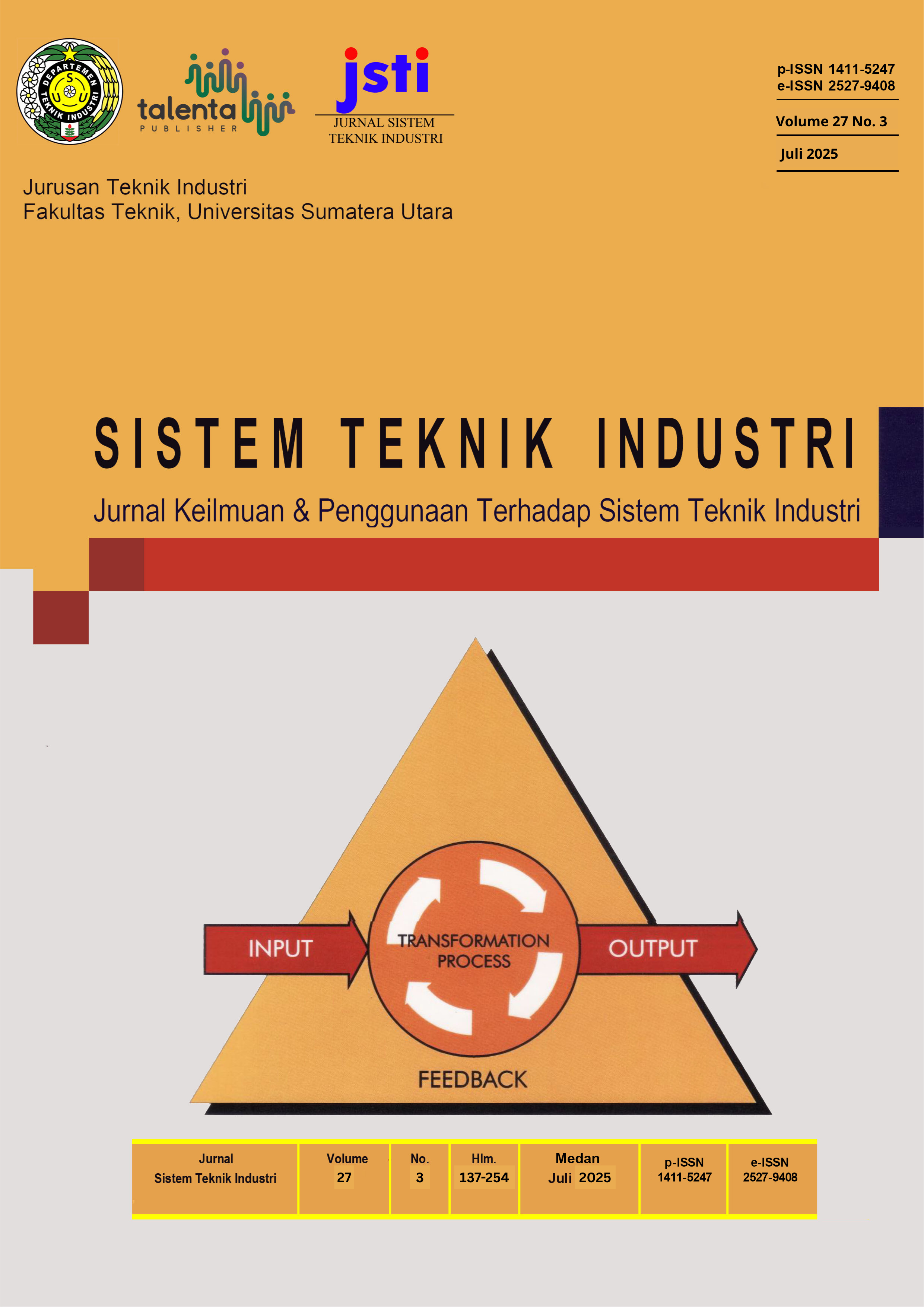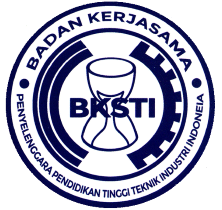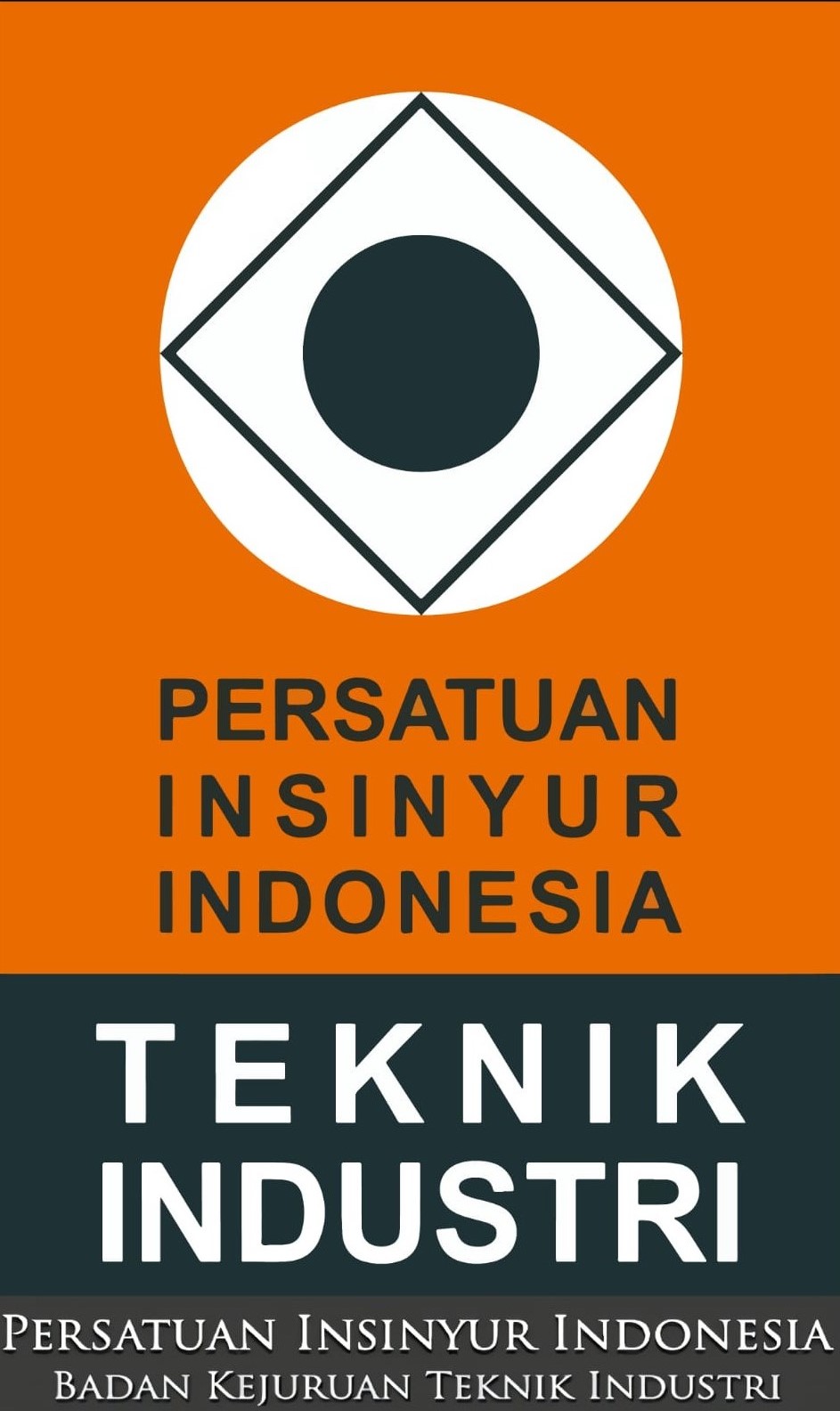Design Thinking Implementation for User Experience Improvement of UNS Graduation Website: A Case Study
DOI:
https://doi.org/10.32734/jsti.v27i3.19980Keywords:
Design Thinking, Usability Testing, Graduation WebsiteAbstract
Design thinking is a human-centered problem-solving methodology focusing on innovative solutions. Design thinking can be used to improve the user experience of a website. Design thinking consists of empathize, define, ideate, prototype, and test phase. Based on preliminary observation, the current UNS Graduation Website demonstrates significant usability issues that interrupt the user experience. The lack of error prevention and informative feedback leads to repeated mistakes and user frustration. Additionally, visual and functional inconsistencies further reduce usability. These issues were confirmed through the System Usability Scale (SUS), which yielded a low score, indicating a difficult and unpleasant user experience. To address these issues, this study applies the design thinking methodology to re-design the UNS Graduation Website with the aim of improving its usability and enhancing user experience. The prototype is tested by 20 users using usability testing tools named Maze and System Usability Scale (SUS). The result based on Maze testing, the prototype got a success rate percentage of 100% and a usability score of 85 for the UNS Graduation Website. The usability score tested by SUS also increased from 43,25 to 82. This affirms the successful outcome of the re-design in improving the user experience and increasing the usability of the UNS Graduation Website.
Downloads
References
N. Y. Dangkua, M. A. Nandito, F. H. P. Jamil, and M. Rahayu, “Implementing human-centric design in developing a multifunctional chair and storage solution for children,” Jurnal Sistem Teknik Industri, vol. 26, no. 2, pp. 180–190, 2024.
T. Brown, “Design thinking for social innovation,” Harvard Business Review, vol. 86, no. 6, pp. 84–92, 2008.
K. Dorst and N. Cross, Creativity in design: A cognitive approach. John Wiley & Sons, 2001.
J. Fras-Castro, E. Vilar, and F. J. Cabrerizo, “Design thinking for user interface design and user experience on campus academic information systems,” Journal of Informatics Visualization, vol. 2, no. 1, pp. 7–17, 2018.
Y. Liu and J. Huang, “The impact of website usability and visual design on user experience and purchase intention: A structural equation modeling approach,” Int. J. Hum. Comput. Interact., vol. 33, no. 1, pp. 1–10, 2017.
H. Plattner, C. Meinel, and L. Leifer, Design Thinking: Understand – Improve – Apply, vol. 36, 2011.
N. Amara, N. Alamsyah, and R. Dwiyansaputra, “Prototyping interface for a website-based visitor information system of Gili Tramena: A design thinking approach,” J. Comput. Sci. Informatics Eng. (J-Cosine), 2025.
B. Shneiderman, C. Plaisant, and M. Cohen, Designing the User Interface: Strategies for Effective Human-Computer Interaction, 6th ed. Boston, MA: Pearson, 2018.
D. Benyon, Designing User Experience: A Guide to HCI, UX and Interaction Design. Pearson, 2017.
M. Hassenzahl, A. Platz, M. Burmester, and K. Lehner, “Hedonic and ergonomic quality aspects determine a software’s appeal,” in Proc. CHI Conf. Human Factors Comput. Syst., pp. 201–208, 2000.
J. M. Silvennoinen and J. P. P. Jokinen, “Appraisals of salient visual elements in web page design,” Adv. Hum.-Comput. Interact., vol. 2016, 2016, Art. no. 3676704.
J. Nielsen, “Enhancing the explanatory power of usability heuristics,” in Proc. CHI Conf. Human Factors Comput. Syst., 1994, pp. 152–158.
T. Tullis and B. Albert, Measuring the User Experience: Collecting, Analyzing, and Presenting Usability Metrics, 2nd ed. Elsevier Inc., 2013.
I. D. Sabukunze and A. Arakaza, “User experience analysis on mobile application design using user experience questionnaire,” Indones. J. Inf. Syst., pp. 15–26, 2021.
S. Krug, Don’t Make Me Think!: A Common Sense Approach to Web Usability, 2nd ed. 2006. [Online]. Available: http://www.worldcat.org/title/dont-make-me-think-a-common-sense-approach-to-web-usability/oclc/61895021
A. Shafayra, E. Franzia, A. Eko, and B. Waspada, “Designing social campaign women empowering community,” Jurnal Desain Komunikasi Visual, vol. 4, no. 2, pp. 237–254, 2022.
D. Paula and K. Cormican, “Design thinking in practice: Understanding and applying design thinking tools,” in Proc. Int. Des. Conf. DESIGN, vol. DS 84, pp. 57–66, 2016.
A. S. D. Martha, H. B. Santoso, K. Junus, and H. Suhartanto, “Designing UI/UX for digital systems using a design thinking approach,” in Proc. ICSECS-ICOCSIM 2021, pp. 360–364, 2021.
A. A. Gasparini, “A conceptual framework for using design thinking in higher education,” in Proc. ACHI 2015 – 8th Int. Conf. Adv. Comput.-Hum. Interact., pp. 49–54, 2015.
K. Brounéus, “Reflections on writing and doing peace research,” in Understanding Peace Research: Methods and Challenges, Taylor & Francis, 2011, pp. 130–145.
A. C. Alwasilah, Pokoknya Kualitatif. Bandung: Yrama Widya, 2002.
R. Longhurst, “Semi-structured interviews and focus groups,” in Int. Encycl. Hum. Geogr., Elsevier, 2009, pp. 580–584.
H. Plattner, An Introduction to Design Thinking: Process Guide. Stanford University, 2018.
D. Haryuda, M. Asfi, and R. Fahrudin, “Perancangan UI/UX menggunakan metode design thinking berbasis web pada Laportea Company,” J. Ilm. Teknol. Inf. Terapan, vol. 8, pp. 111–117, 2021.
M. Rosala, “Using ‘How Might We’ questions to ideate on the right problems,” Nielsen Norman Group, 2021.
L. Sugiyanto, F. Kiram, A. Abulkhoir, F. Aldin, and M. V. Albino, “Evaluasi branding dalam desain logo travel agent D’SUN,” Jurnal Desain STDI, vol. 1, no. 2, 2021.
A. Chandradevi and N. B. Puspitasari, “Analisa pengendalian kualitas produksi botol X 500 ml pada PT. Berlina Tbk dengan menggunakan metode New Seven Tools,” Industrial Eng. Online J., vol. 5, pp. 1–9, 2016.
V. K. Reynaldi and N. Setiyawati, “Perancangan UI/UX fitur Mentor On Demand menggunakan metode design thinking pada platform pendidikan teknologi,” JIPI, vol. 7, pp. 835–849, 2022.
T. Qintari, T. Suratno, and M. Mauladi, “Rancang bangun sistem informasi tahanan dan barang bukti menggunakan model prototype pada Kepolisian Daerah Jambi,” JUSS, vol. 2, pp. 36–44, 2019.
“Desktop screen resolution stats worldwide,” StatCounter, 2023. [Online]. Available: https://gs.statcounter.com/screen-resolution-stats/desktop/worldwide
H. T. Husna, F. Susanti, and A. Pratondo, “Perancangan dan implementasi desain user interface dan user experience pada aplikasi pendidikan seks untuk anak usia 6–12 tahun,” eProceedings of Applied Science, vol. 6, pp. 2697–2706, 2020.
S. L. Ramadhan, “Perancangan user experience aplikasi pengajuan E-KTP menggunakan metode UCD pada Kelurahan Tanah Baru,” JATISI, vol. 8, pp. 287–298, 2021.
Z. Sharfina and H. B. Santoso, “Design and usability of mobile learning applications using UCD,” in Proc. ICACSIS 2016, pp. 145–148.
S. Ariessaputra, L. T. Novianung, and C. Ramadhani, “Analysis of user experience online mentoring platform with user-centered design approach at Giza Design Lab,” Dielektrika, vol. 9, no. 2, pp. 98–105, 2022.
A. N. Dhamayanty, “Review Maze design tools usability testing online,” Giza Lab Medium, 2019. [Online]. Available: https://medium.com/gizalab/review-maze-design-tools-usability-testing-online-bdbcdecd126a
U. Ependi, T. B. Kurniawan, and F. Panjaitan, “System usability scale vs heuristic evaluation: A review,” Simetris: J. Tek. Mesin, Elektro dan Ilmu Komput., vol. 10, pp. 65–74, 2019.
Downloads
Published
How to Cite
Issue
Section
License
Copyright (c) 2025 TALENTA Publisher Universitas Sumatera Utara

This work is licensed under a Creative Commons Attribution-ShareAlike 4.0 International License.
The Authors submitting a manuscript do so on the understanding that if accepted for publication, the copyright of the article shall be assigned to TALENTA Publisher Universitas Sumatera Utara as the publisher of the journal.
Copyright encompasses the rights to reproduce and deliver the article in all forms and media. The reproduction of any part of this journal, its storage in databases, and its transmission by any form or medium will be allowed.



















